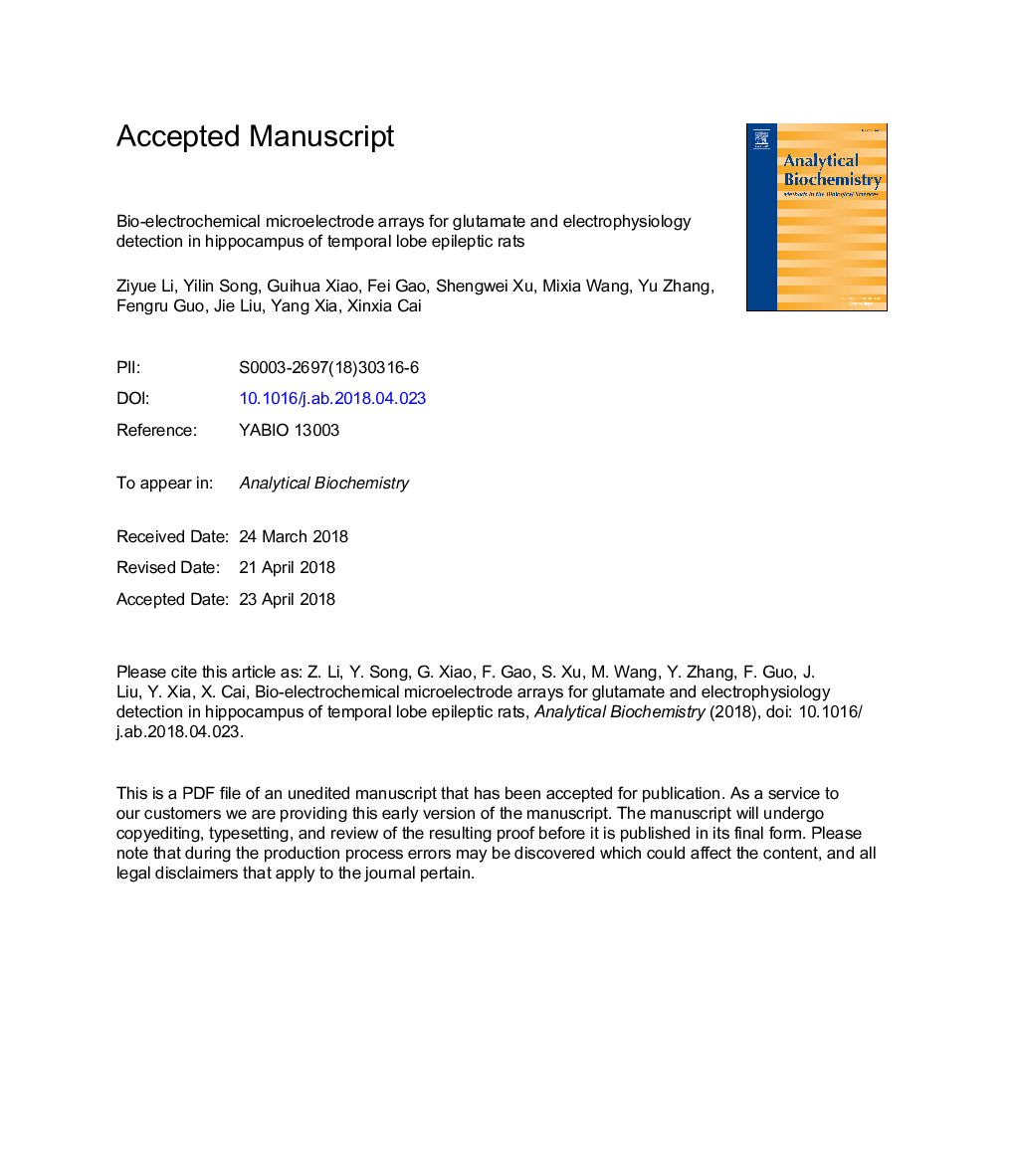| Article ID | Journal | Published Year | Pages | File Type |
|---|---|---|---|---|
| 7556862 | Analytical Biochemistry | 2018 | 20 Pages |
Abstract
Temporal Lobe Epilepsy (TLE) is a chronic neurological disorder, characterized by sudden, repeated and transient central nervous system dysfunction. For better understanding of TLE, bio-nanomodified microelectrode arrays (MEA) are designed, for the achievement of high-quality simultaneous detection of glutamate signals (Glu) and multi-channel electrophysiological signals including action potentials (spikes) and local field potentials (LFPs). The MEA was fabricated by Micro-Electro-Mechanical System fabrication technology and all recording sites were modified with platinum black nano-particles, the average impedance decreased by nearly 90 times. Additionally, glutamate oxidase was also modified for the detection of Glu. The average sensitivity of the electrode in Glu solution was 1.999â¯Â±â¯0.032â¯Ãâ¯10â2pA/μM·μm2(nâ¯=â¯3) and linearity was Râ¯=â¯0.9986, with a good selectivity of 97.82% for glutamate and effective blocking of other interferents. In the in-vivo experiments, the MEA was subjected in hippocampus to electrophysiology and Glu concentration detection. During seizures, the fire rate of spikes increases, and the interspike interval is concentrated within 30â¯ms. The amplitude of LFPs increases by 3 times and the power increases. The Glu level (4.22â¯Î¼M, nâ¯=â¯4) was obviously higher than normal rats (2.24â¯Î¼M, nâ¯=â¯4). The MEA probe provides an advanced tool for the detection of dual-mode signals in the research of neurological diseases.
Related Topics
Physical Sciences and Engineering
Chemistry
Analytical Chemistry
Authors
Ziyue Li, Yilin Song, Guihua Xiao, Fei Gao, Shengwei Xu, Mixia Wang, Yu Zhang, Fengru Guo, Jie Liu, Yang Xia, Xinxia Cai,
